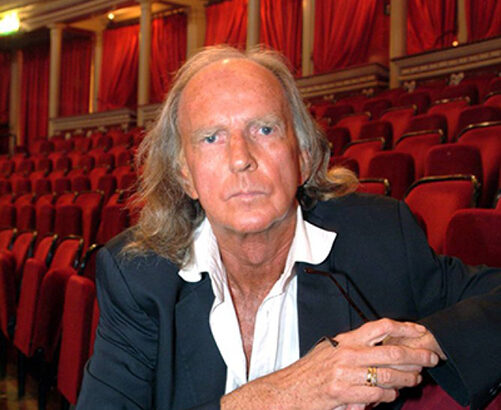Two recent performances at the NCH gave me considerable satisfaction. The first, with the NSO conducted by Dubliner Killian Farrell, currently general music director of the state theatre in Meiningen, had Finghin Collins as the brilliant interpreter of Stanford’s 2nd Piano Concerto – a piece demanding verve and virtuosity supplied with breathtaking dash by Mr Collins. But the work also has passages of filigree delicacy that found the intrepid soloist equally refined.
The second event was UK composer John Tavener’s eight-movement reflections on the Blessed Virgin – The Protecting Veil. Dating from 1988, this cello concerto in all but name, was the main work in the visiting Britten Sinfonia’s strings only programme directed by first violinist Thomas Gould with outstanding Guy Johnston as the sympathetic soloist.
Although reared a Presbyterian and being organist in St John’s Church in London’s Kensington for 14 years, Tavener’s fascination with Roman Catholicism resulted in several works in the 1970s including Ultimos Ritos (Last Rites) in 1974 – a choral mediation on texts by St John of the Cross. The Spanish Carmelite’s metaphysical concept of ‘dying to oneself’ strongly impacted on Tavener.
He was also inspired by the life of the Little Flower, and his opera Thérèse, composed for London’s Royal Opera House was produced there in 1979. The Dublin International Organ Festival commissioned Tavener’s Mandelion – meditations on the Lord and the Mother of God – which was premièred by the late Peter Sweeney in St Patrick’s Cathedral in 1982.
But, it was Tavener’s reception into the Russian Orthodox Church in 1977 that filled him with, he said, “a sense of homecoming” and culminated with his Akhmatova Requiem (1980), for soprano, bass and orchestra.
Tavener suffered a stroke in 1980, which he believed shifted his creative outlook and helped him unify his faith with his music. The death of his mother in 1985 affected him deeply but he found solace in Greece at the shrine of St Nektarios of Aegina.
It was also around this time that Russian-born Mother Thekla Sharf, founder of the enclosed Orthodox Monastery of the Assumption in Whitby, North Yorkshire, became a significant influence on Tavener’s life.
He referred to her as his ‘spiritual mother’ and she supplied the texts for a number of his works including The Apocalypse (1993), a massive piece for soloists, chorus and orchestra as well as his choral Song for Athene, sung at the funeral of Diana, Princess of Wales, in Westminster Abbey in 1997.
Roman Catholic inspired works were renewed with the Mass, Sollemnitas in Conceptione Immaculata Beatae Mariae Virginis (2006), and his large scale Requiem first performed in 2008. Tavener explained the essence of this work was contained in the words “Our glory lies where we cease to exist”.
Tavener had a penchant for the writing of WB Yeats not least his To a child dancing in the wind. The composer admitted he was inspired with the frailty, tenderness, and spiritual transparency of Yeats’ poetry, which he considered had “a profound sense of the loss of the sacred and primordial tradition in art”


 John Tavener
John Tavener 